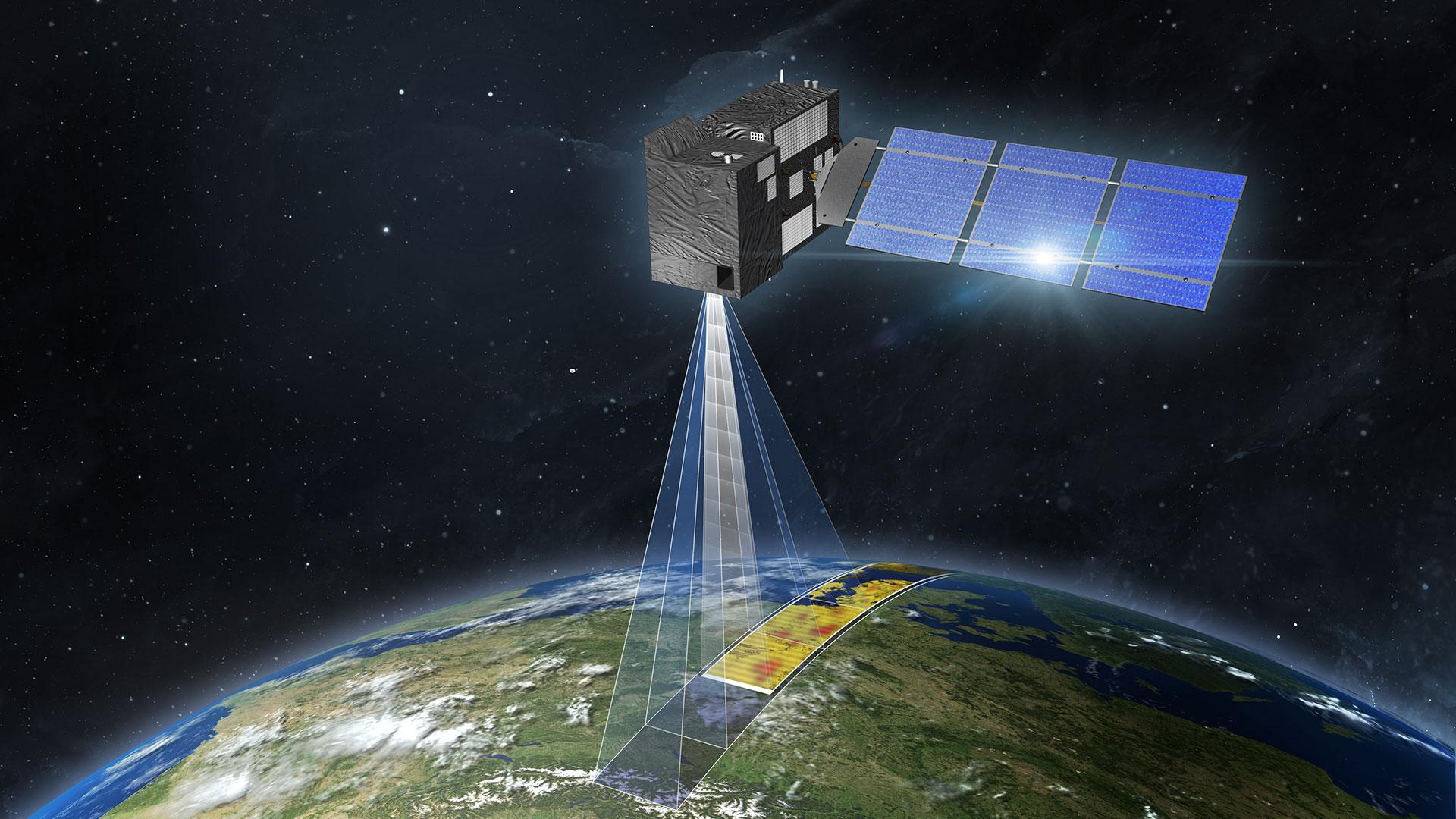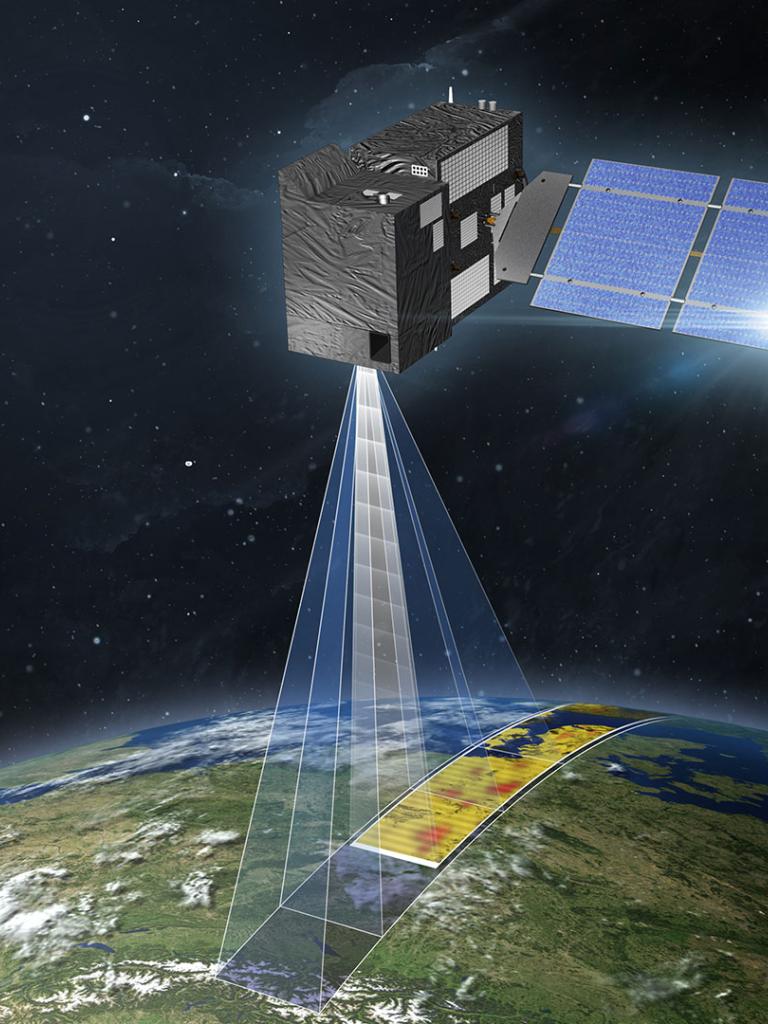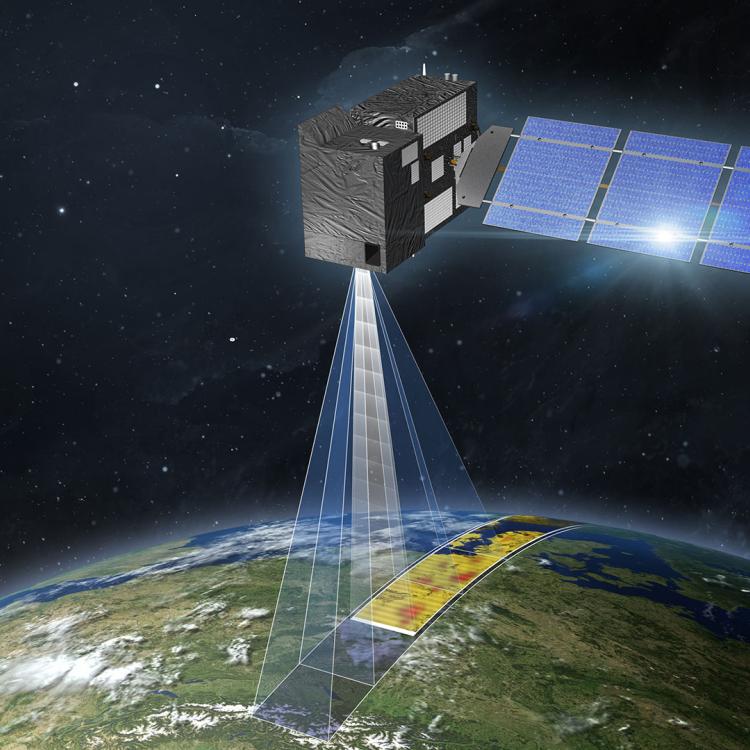15 January 2025
07 September 2020
The information produced is designed to complement and enhance the industrial level-1 processing Algorithm Theoretical Baseline Document (ATBD), in support of EUMETSAT’s CO2M ground segment development activities.
Objectives
Tasks in the following categories will be executed:
Activity 1: Data processing steps, inverse processing methods and error propagation
Activity 2: Scientific algorithm data flows and functional requirements
Activity 3: Preparation of test-data and evaluation of processing performance
Overview
The above activities will support wider EUMETSAT work on the requirements definition for a CO2M operational level-1 processor and its processing and product monitoring as part of the Payload Data Processing Subsegment (PDGS) – see Figure 1.

The main objective of the Level-1 science support study is to establish the algorithm baseline (ATBD) for the development of the operational Level-0 to 1B data processor for the NO2I/CO2I instrument on board the Copernicus CO2M mission. This Level-0 to 1B data processor is processing the raw data of the CO2I/NO2I push-broom imaging spectrometer into calibrated, geo-physical units, annotated with, amongst others, and quality parameters. The resulting Level-1B data products are the main input for the Level 2 retrieval algorithms.
The definition of the algorithm baseline builds on the experience and heritage of previous missions with similar types of instruments, such as Sentinel-5p, Sentinel-5, OMI, GOME-2 and SCIAMACHY. The study assesses the suitability of existing algorithms for the new CO2I/NO2I instrument and defines new or improved algorithms addressing the specifics of the instrument.
A notable difference between CO2I/NO2I and predecessor instruments is the use of a fibre-based entrance slit in the instrument design. Its main purpose is to generate a homogeneous slit illumination, which leads to a stable instrument spectral response over radiometrically non-uniform ground scenes. The device, which is referred to as a “two-dimensional slit homogenizer” (2DSH) also significantly improves the spatial co-registration between the instrument’s 4 spectral bands. However, it also induces a complex slit image on the detector, which requires specific techniques in Level-1 processing. The study develops such algorithms and assesses their impact, using simulations and other techniques, and proposes updated algorithms for improved handling of the slit projection.
For the CO2I/NO2I instrument a new generation of detectors is being used, both in the VIS/NIR and SWIR spectral regions. The study performs detailed simulations for error effects that have been found in these detectors during test campaigns and assess their impact on data quality. These simulations will lead to new or improved algorithms for calibration and correction of radiometric errors from detector effects.
Another main topic is the correction of instrument straylight. The exact straylight behaviour differs greatly between individual instruments. In general, straylight corrections can be complicated and impose heavy computational resource requirements. The study aims at defining the optimal algorithm for the correction of the CO2I/NO2I straylight, taking into account product quality as well as computational resource issues.
In addition to the definition of the algorithm baseline, the study assists EUMETSAT with the definition of the Level-0 to 1B data processing in general. This includes aspects such as:
- IPF architecture, e.g. the overall position of the Level-0 to 1B data processor in the ground segment and the orchestration with other data processors,
- The provision of, and in-flight updates to the calibration key data that are needed by the Level-0 to 1B data processor,
- The definition of the Level-1B data products as well as other auxiliary data products that are input or output to the Level-0 to 1B data processor,
- Simulations and test data generation for assessing the impact of instrument effects on downstream data processors and data products.



